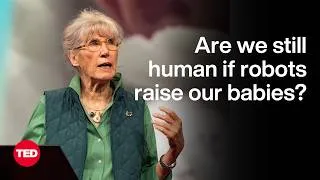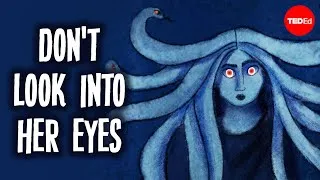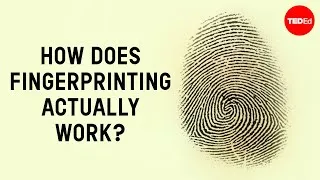请双击下面的英文字幕来播放视频。
翻译人员: Riley WANG
校对人员: Xiaoyu Ye
00:06
You hear the gentle lap of waves,
0
6769
2939
你听到海浪温柔的拍打声,
00:09
the distant cawing of a seagull.
1
9708
2205
听到远处海鸥的叫声,
00:11
But then an annoying whine
interrupts the peace,
2
11913
3907
但一阵嗡嗡声扰乱了平静,令人恼火。
00:15
getting closer, and closer, and closer.
3
15820
3639
声音越来越近,越来越近。
00:19
Until...whack!
4
19459
2109
然后,啪的一声!
00:21
You dispatch the offending mosquito,
and calm is restored.
5
21568
5049
你拍死了烦人的蚊子,
世界终于重回安静。
00:26
How did you detect that noise from afar
and target its maker with such precision?
6
26617
5113
你是如何听到远处的声音,
并如此准确地锁定声音来源的呢?
00:31
The ability to recognize sounds
and identify their location
7
31730
3736
我们之所以能够
识别声音并判断出其所在位置
00:35
is possible thanks to the auditory system.
8
35466
3052
很大程度是因为听觉系统。
00:38
That’s comprised of two main parts:
the ear and the brain.
9
38518
4642
它由大脑和耳朵这两部分构成。
00:43
The ear’s task is to convert sound energy
into neural signals;
10
43160
4214
耳朵的任务是将声音转换成为神经信号;
00:47
the brain’s is to receive and process
the information those signals contain.
11
47374
4705
大脑则是接受并处理这些信号中的信息。
00:52
To understand how that works,
12
52079
1819
为了更好地理解它的工作原理,
00:53
we can follow a sound
on its journey into the ear.
13
53898
3649
我们跟随声音进行一场耳朵之旅。
00:57
The source of a sound creates vibrations
14
57547
2074
声源会产生振动,
00:59
that travel as waves of pressure
through particles in air,
15
59621
3702
这会以压力波的形式
通过空气中的微粒传播,
01:03
liquids,
16
63323
898
或是在液体
01:04
or solids.
17
64221
1504
和固体中传播。
01:05
But our inner ear, called the cochlea,
18
65725
2261
但我们的内耳,也叫耳蜗,
01:07
is actually filled
with saltwater-like fluids.
19
67986
3980
实际上充满了盐水一样的液体。
01:11
So, the first problem to solve
is how to convert those sound waves,
20
71966
3886
因此,第一个要解决的问题是
01:15
wherever they’re coming from,
21
75852
1680
如何将这些四面八方传来的声波
01:17
into waves in the fluid.
22
77532
2717
转化成液体的波动。
01:20
The solution is the eardrum,
or tympanic membrane,
23
80249
3584
答案在于鼓膜。
01:23
and the tiny bones of the middle ear.
24
83833
3397
以及中耳处一些微小的骨头。
01:27
Those convert the large movements
of the eardrum
25
87230
2940
它们将鼓膜较大的震动
01:30
into pressure waves
in the fluid of the cochlea.
26
90170
3758
转化成耳蜗液体的压力波。
01:33
When sound enters the ear canal,
27
93928
2058
当声音进入耳道,
01:35
it hits the eardrum and makes it vibrate
like the head of a drum.
28
95986
4027
它首先使鼓膜震动,
就像敲打一面鼓。
01:40
The vibrating eardrum jerks a bone
called the hammer,
29
100013
3926
震动的鼓膜使
一块叫做锤骨的骨头发生震动。
01:43
which hits the anvil and
moves the third bone called the stapes.
30
103939
4738
锤骨击打砧骨,
并继续震动第三块骨头镫骨。
01:48
Its motion pushes the fluid
within the long chambers of the cochlea.
31
108677
4365
这些动作推动耳蜗狭长腔室中的液体流动。
01:53
Once there,
32
113042
1347
至此,
01:54
the sound vibrations have finally
been converted into vibrations of a fluid,
33
114389
4790
声音的震动终于转化成为液体的震动。
01:59
and they travel like a wave
from one end of the cochlea to the other.
34
119179
4025
之后他们如波浪般从耳蜗的一头传至另一头。
02:03
A surface called the basilar membrane
runs the length of the cochlea.
35
123204
4589
一种叫做基底膜的膜状结构遍布耳蜗。
02:07
It’s lined with hair cells that have
specialized components
36
127793
4010
基底膜上覆盖拥有特殊结构的毛细胞,
02:11
called stereocilia,
37
131803
1733
称为纤毛。
02:13
which move with the vibrations of the
cochlear fluid and the basilar membrane.
38
133536
4400
它会随耳蜗液体和基底膜而震动,
02:17
This movement triggers a signal
that travels through the hair cell,
39
137936
4329
这种动作会沿毛细胞触发信号,
02:22
into the auditory nerve,
40
142265
1889
信号会进入听觉神经,
02:24
then onward to the brain,
which interprets it as a specific sound.
41
144154
4147
之后进入大脑,
由大脑解析识别出特定的声音。
02:28
When a sound makes
the basilar membrane vibrate,
42
148301
3419
声音让基底膜震动时,
02:31
not every hair cell moves -
43
151720
2649
并非所有毛细胞都会随之震动,
02:34
only selected ones,
depending on the frequency of the sound.
44
154369
4875
依据声音的频率不同,
只有特定的毛细胞会摆动。
02:39
This comes down to some fine engineering.
45
159244
2471
这与一些精密工程学相关。
02:41
At one end,
the basilar membrane is stiff,
46
161715
3723
基底膜一段较为坚硬,
02:45
vibrating only in response to short
wavelength, high-frequency sounds.
47
165438
5488
只会对波长短、频率高的声音
做出震动反应。
02:50
The other is more flexible,
48
170926
1819
另一端则更为灵活,
02:52
vibrating only in the presence of longer
wavelength, low-frequency sounds.
49
172745
4768
只对波长长、频率低的声音
做出反应。
02:57
So, the noises made by the seagull
and mosquito
50
177513
2948
因此海鸥和蚊子的声音
03:00
vibrate different locations
on the basilar membrane,
51
180461
3076
其实会引起基底膜不同区域的震动,
03:03
like playing different keys on a piano.
52
183537
3214
就像是在钢琴上弹不同的琴键。
03:06
But that’s not all that’s going on.
53
186751
1912
但这并不是全部过程。
03:08
The brain still has another
important task to fulfill:
54
188663
3976
大脑仍然有另一个重要的任务:
03:12
identifying where a sound is coming from.
55
192639
2937
它需要识别声音来自何处。
03:15
For that, it compares the sounds
coming into the two ears
56
195576
4037
为此,大脑会比照进入两个耳朵的声音,
03:19
to locate the source in space.
57
199613
2513
以此在空间中定位声源。
03:22
A sound from directly in front of you will
reach both your ears at the same time.
58
202126
4824
直接来自你面前的声音
会同时到达双耳,
03:26
You’ll also hear it at the same intensity
in each ear.
59
206950
3794
每个耳朵听到的声音强度也相同。
03:30
However, a low-frequency sound
coming from one side
60
210744
3561
但是来自其他方向的低频声音
03:34
will reach the near ear microseconds
before the far one.
61
214305
4542
会以微秒之差先进入靠近声源一侧的耳朵。
03:38
And high-frequency sounds will sound
more intense to the near ear
62
218847
3928
靠近声源的耳朵
会感受到高频声音更大的强度,
03:42
because they’re blocked
from the far ear by your head.
63
222775
3235
因为头部会阻挡
声音到达另一边的耳朵。
03:46
These strands of information
reach special parts of the brainstem
64
226010
3755
这部分滞后的信息
会到达脑干的特殊位置,
03:49
that analyze time and
intensity differences between your ears.
65
229765
4359
以此分析双耳信号的时间和强度差异。
03:54
They send the results of their
analysis up to the auditory cortex.
66
234124
4623
它们将分析结果
传输至大脑皮层的听觉中枢。
03:58
Now, the brain has
all the information it needs:
67
238747
2986
现在,大脑拥有了全部所需的信息:
04:01
the patterns of activity
that tell us what the sound is,
68
241733
2806
可以断定是哪种声音的活动模式,
04:04
and information about
where it is in space.
69
244539
3894
以及声音在空间中的位置信息。
04:08
Not everyone has normal hearing.
70
248433
2171
并非所有人都拥有正常听力。
04:10
Hearing loss is the third most common
chronic disease in the world.
71
250604
4445
失聪是世界上第三大最普遍的慢性疾病。
04:15
Exposure to loud noises
and some drugs can kill hair cells,
72
255049
4066
接触巨大噪音和一些药物会杀死毛细胞,
04:19
preventing signals from traveling
from the ear to the brain.
73
259115
3897
从而阻止信号从耳朵传送至大脑。
04:23
Diseases like osteosclerosis freeze
the tiny bones in the ear
74
263012
4659
骨硬化等疾病会使耳朵中的小骨硬化,
04:27
so they no longer vibrate.
75
267671
2170
使其无法震动。
04:29
And with tinnitus,
76
269841
1464
至于耳鸣,
04:31
the brain does strange things
77
271305
1659
大脑会做出奇怪的反应,
04:32
to make us think there’s a sound
when there isn’t one.
78
272964
3708
使我们听到并不存在的声音。
04:36
But when it does work,
79
276672
1536
但是当听觉系统正常工作时,
04:38
our hearing is an incredible,
elegant system.
80
278208
2762
它是一个精妙无比的系统。
04:40
Our ears enclose a fine-tuned piece
of biological machinery
81
280970
3753
我们的耳朵包含了
精密协调的生物构造,
04:44
that converts the cacophony of vibrations
in the air around us
82
284723
3674
将周边空气中的刺耳震动
04:48
into precisely tuned electrical impulses
83
288397
3140
转化成为精确校准的电脉冲,
04:51
that distinguish claps, taps,
sighs, and flies.
84
291537
4762
使我们能够分辨掌声,
敲打声,叹息和苍蝇的嗡嗡声。
New videos
关于本网站
这个网站将向你介绍对学习英语有用的YouTube视频。你将看到来自世界各地的一流教师教授的英语课程。双击每个视频页面上显示的英文字幕,即可从那里播放视频。字幕会随着视频的播放而同步滚动。如果你有任何意见或要求,请使用此联系表与我们联系。







